Animals & Humans: A Relationship Preserved in Archives – Part Three
Animals & Humans: A Relationship Preserved in Archives – Part Three
This is the third and installment part of a three-part blog series on “Animals & Humans: A Relationship Preserved in Archives”. In part three, archives technician Megan focuses on more of the emotional and/or social reasons behind why humans keep animals around, along with some photographs from the archives of unexpected wild encounters!
By Megan Lockhart
***Read last week's blog article for part two of this series.
Pets, Mascots, and Service Animals
Why do humans keep pets? To answer this question, we could simply think of the reasons why we personally have had pets in our lives. We find them cute, we get a rush of endorphins when interacting with them, a feeling that can be quite addictive. Many of us keep a pet as a form of company, they are something we can love and care for, and they usually love us back. Sometimes we keep a pet for protection, like a guard dog. Or, in some cultures, certain types of pets are kept as a form of status symbol. Historically, this was often the case with exotic animals. Certain breeds of animals, like dog breeds, are quite expensive, and often only people with a large amount of disposable income can purchase these animals as pets. There are even competitions for showcasing these special breeds, dog shows are one form of competition that comes to mind, where pet owners can win a monetary prize and public recognition. Considering pets to be a part of the family is not a new phenomenon. I’ve seen countless photographs in archives where pets, such as cats, dogs, or ponies, are included in family portraits. Generations upon generations of people have loved their pets like family. Check out some of our portraits featuring pets from the archives below.

Three men and a dog at the Patteson house in Eastwood, Ontario. The dog was the Patteson family's pet dog named Muma. Muma is featured in many of the family portraits on the property. Dated 17 April 1892 [COA126 1.19, 1088ph]
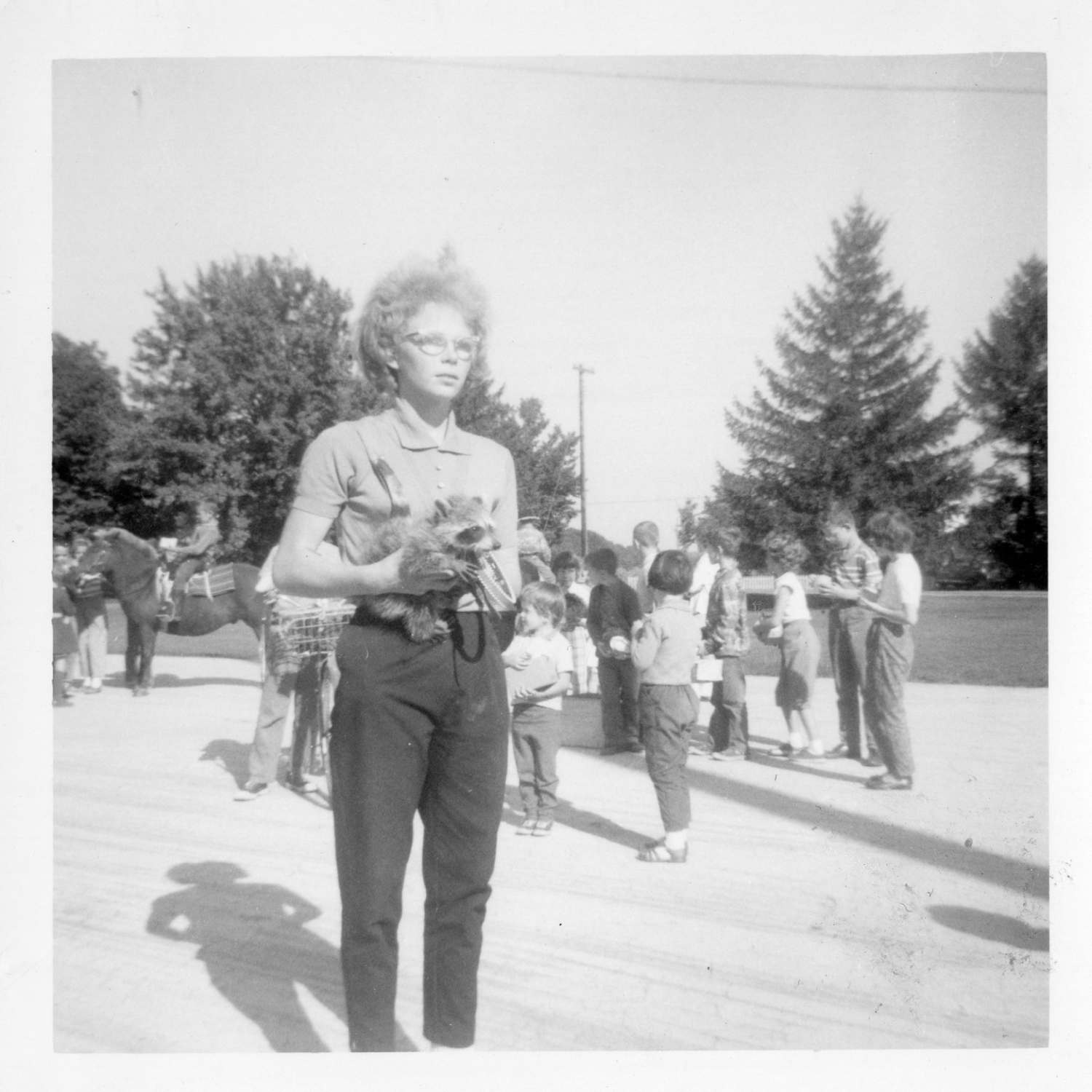
An unidentified person holding a raccoon at a pet show in Innerkip, Ontario, in 1963. [COA24, 261ph]
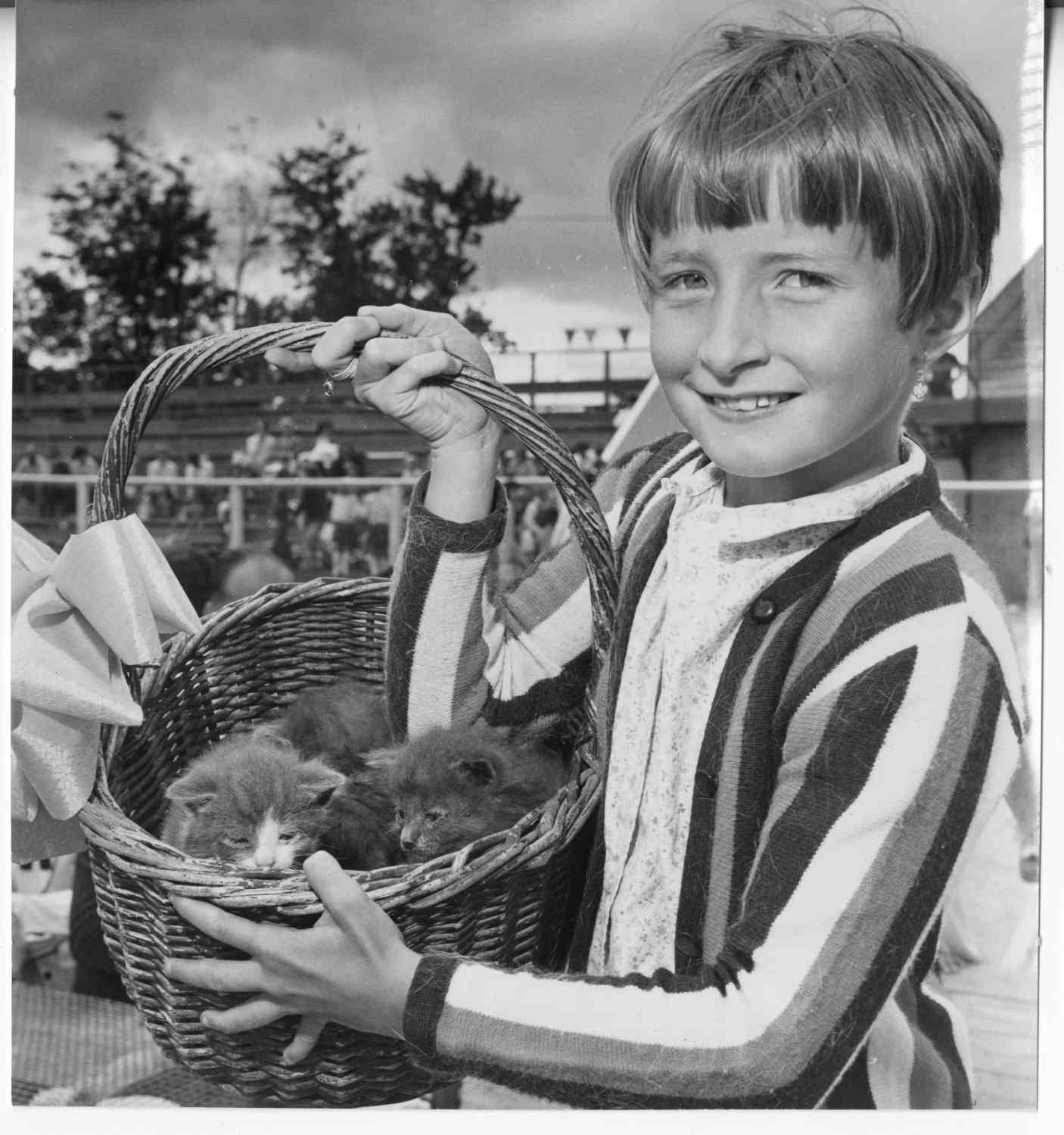
Ingrid Gysbers with kittens at Tillsonburg Fair pet show, 27 August 1968 [655ph]
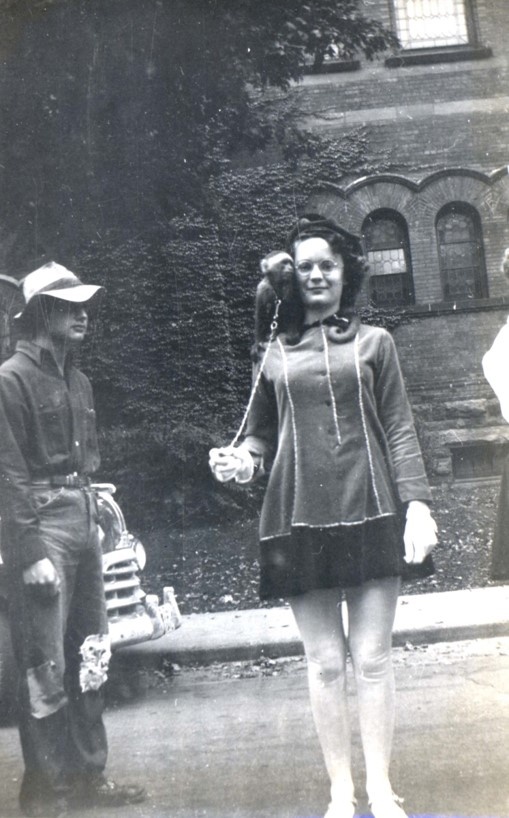
Barbara Brown and her monkey at a Woodstock Collegiate Institue field day, 1950.
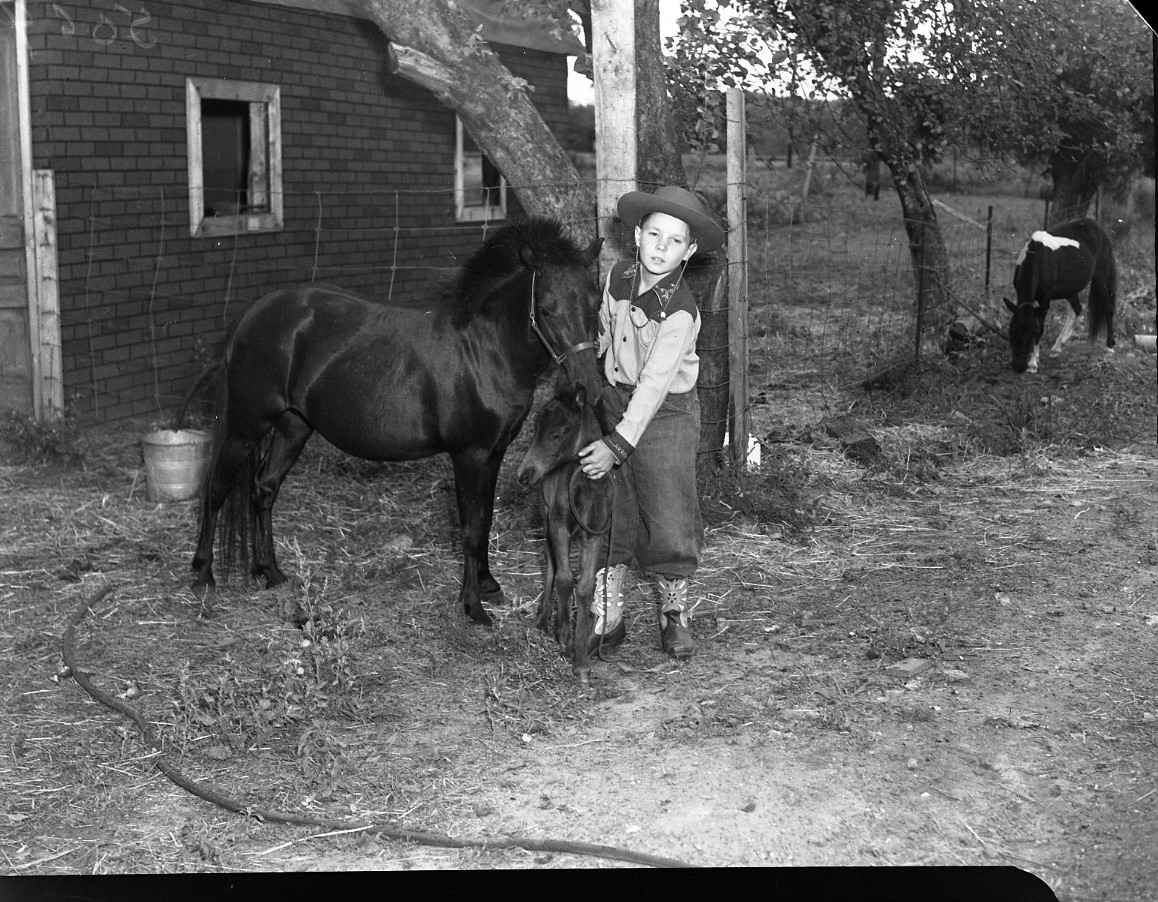
A little boy in a cowboy costume posing with a pony and a foal. Circa 1950. [COA123 4-204]
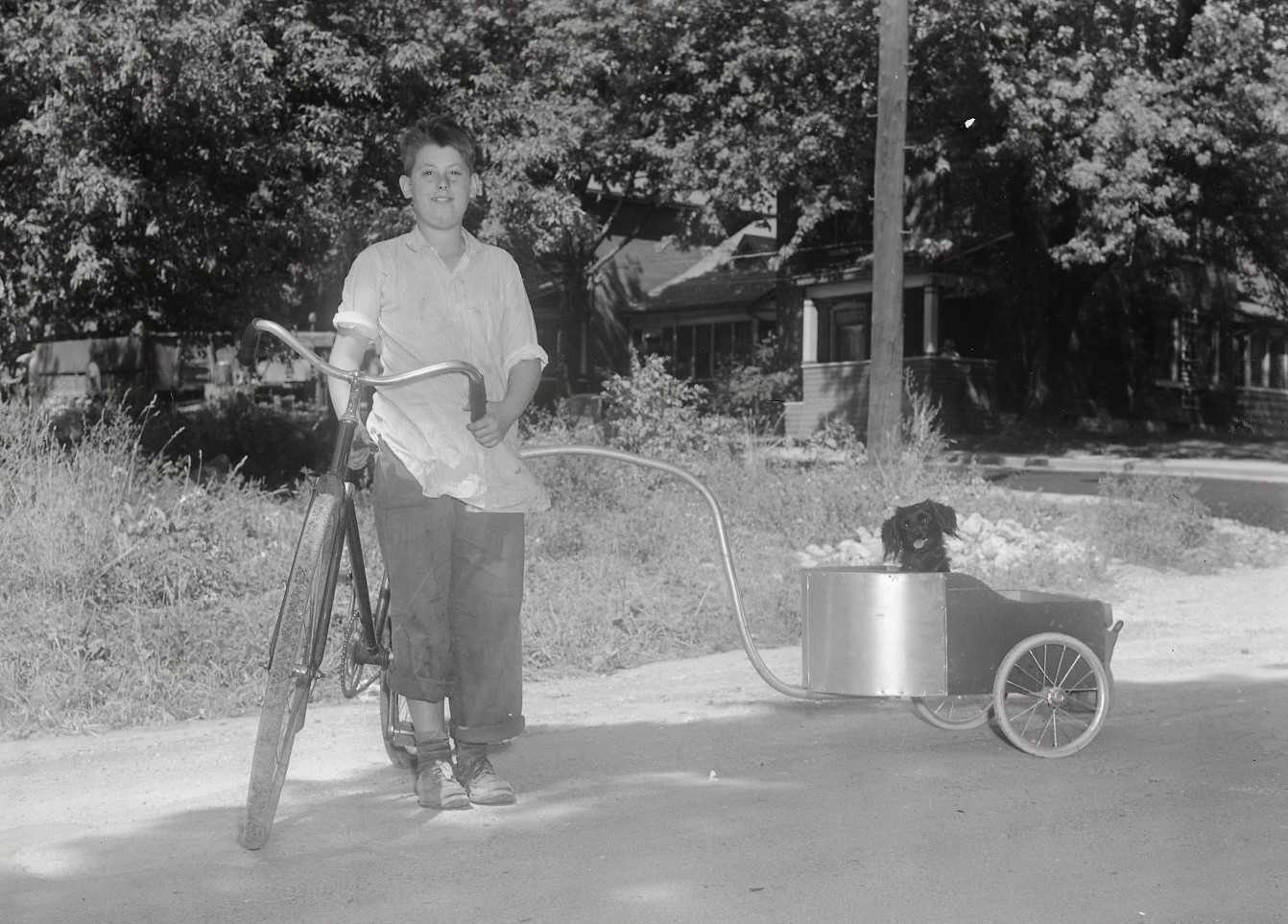
Boy towing a dog in a trailer attached to his bicycle. Circa 1950. [COA123 6-94]
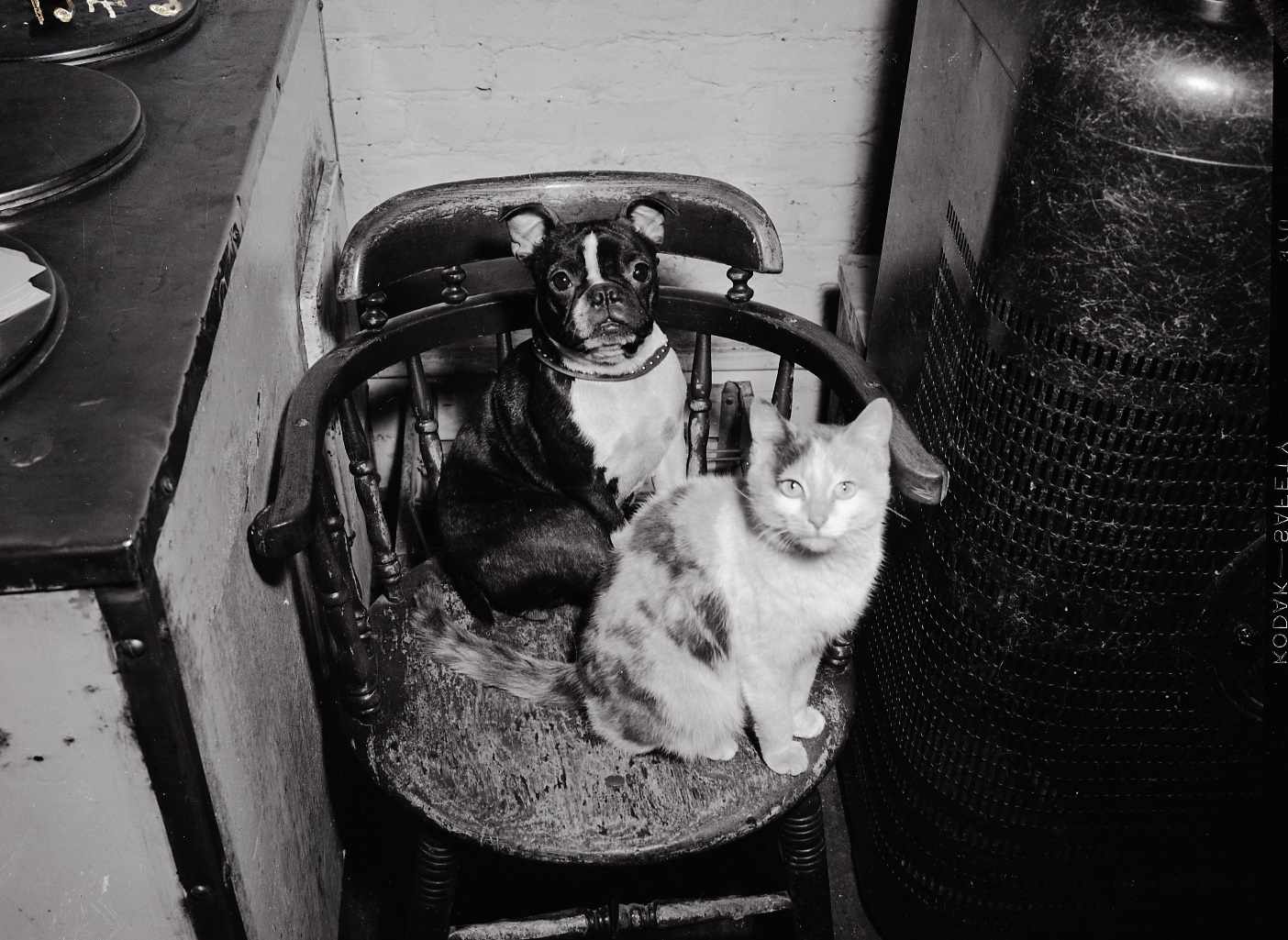
A dog and a cat posing together on a wooden chair. Circa 1950. [COA123 7-42]

Miss Margaret Knox, her brother James, Olive Pinkston, and Jean Knox on a farm with a dog sitting in a chair for the photo. Circa early 1900s. [COA169 Plattsville Women's Institute Tweedsmuir No. 3].
Animals also provide essential services to humans, and in many cases, help individuals function and thrive in their daily lives. An example of this is service animals and support animals. People living with disabilities, chronic illnesses, mental health challenges, or those who are neurodivergent, sometimes live their lives with the support of a service animal.
Animals have also been used as mascots, or commercial/advertising purposes, or for boosting morale. Advertisers have been using cute animals to sell products for many years. One example of an animal mascot we have in our archives is photographs of the mascot for the Woodstock Advanced Driving and Maintenance School (Woodstock A.D.M.S.), a Great Dane owned by commanding officer Lt.-Col. R.B. Crouch. The A.D.M.S. was a militia training camp constructed on the Woodstock Fairgrounds during the Second World War, which offered training on driving and repairing military vehicles, as well as provided “battle landscapes” which mimicked the conditions soldiers were facing in Europe. The school also coordinated and hosted a variety of public events in support of civilian recruitment and the Victory Loan Campaign. Crouch’s dog Duke appears in several photographs from the A.D.M.S. photo albums we have in our holdings.
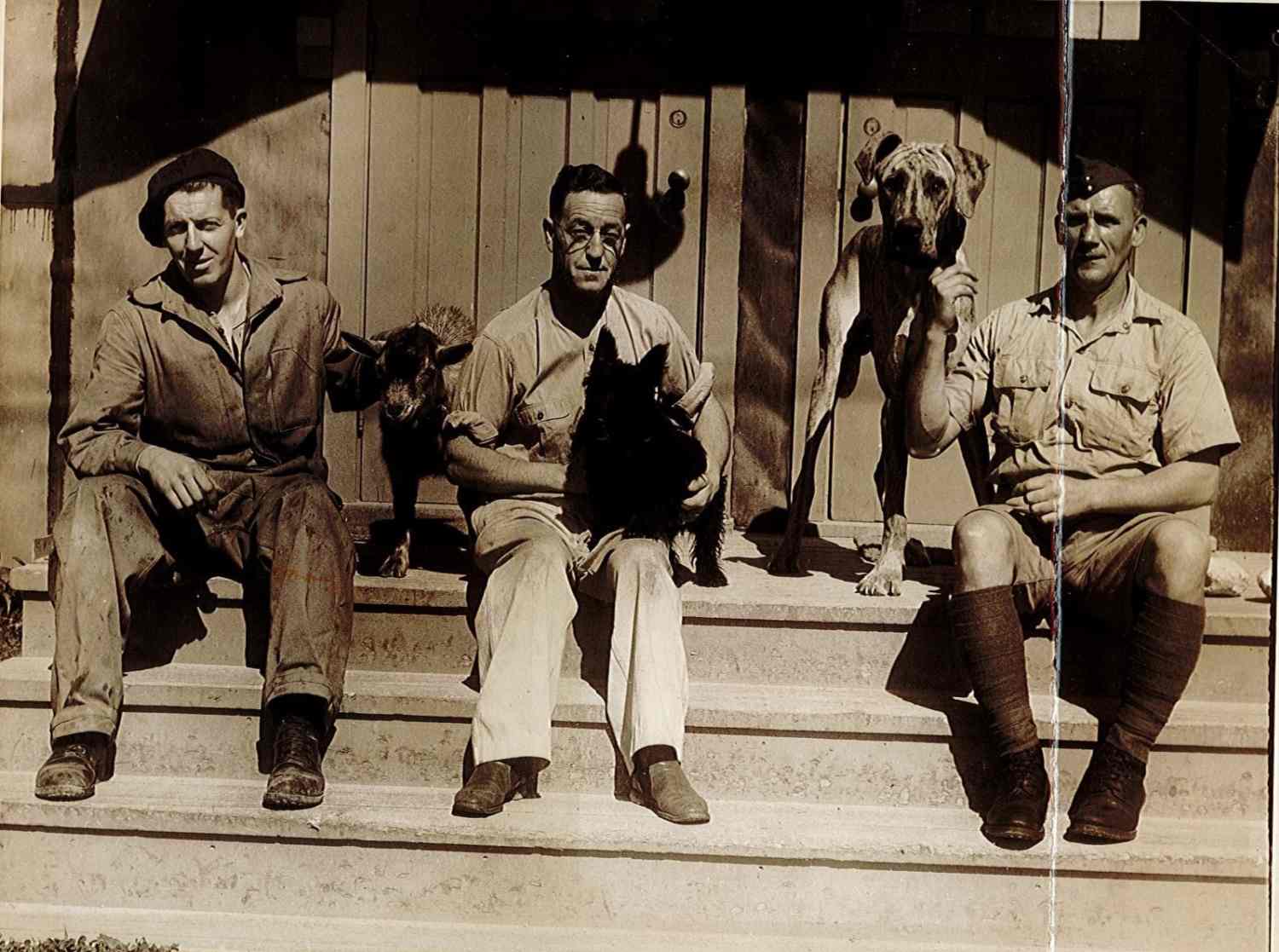
Three men at the Woodstock Advanced Driving & Maintenance School posing with a small goat, and two dogs. The Great Dane on the far right was named Duke, he was the unofficial mascot of the training camp, 1940s.
Entertainment (For Better or Worse)
Humans have been using animals for entertainment purposes for many years, often and unfortunately, at the expense of the animals being used. We have witnessed an example of this in our archival records with our “donkey baseball” poster and photographs. I did some digging into this absurd sport, which I discovered was more of a spectacle than an actual competitive sport. Without getting into too much of the logistics and details, the “sport” was basically a form of baseball but with players riding donkeys; the rules were altered from regular baseball. Donkey baseball achieved popularity during the Great Depression era in the 1930s. The addition of donkeys was a way to add entertainment value and a level of difficulty for the players, as the donkeys were known to be uncooperative. The sport likely led to many of the players being injured, and likely some of the donkeys too. Donkey sanctuaries exist today that take in retired donkeys from the sport, which still takes place in some locations in North America. Donkey baseball was described as the “funniest sport on earth” in this poster from 1936.
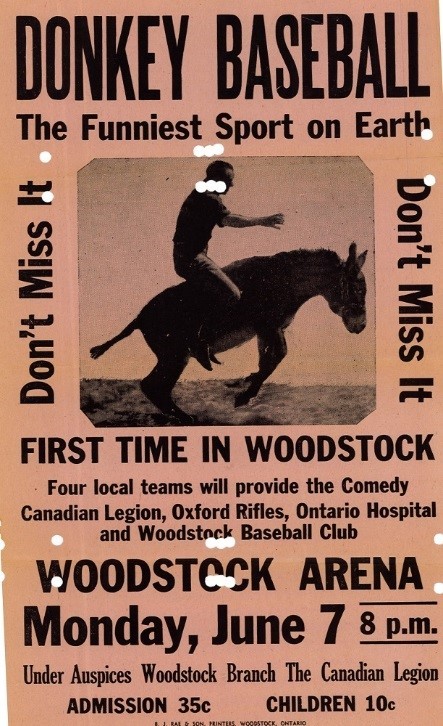
A poster advertising a donkey baseball game that took place on June 7, 1936, in Woodstock, Ontario. Four local teams played including the Canadian Legion, Oxford Rifles, Ontario Hospital, and Woodstock Baseball Club. The game was played at the Woodstock Arena. Admission was 35 cents for adults and 10 cents for children. [COA94]
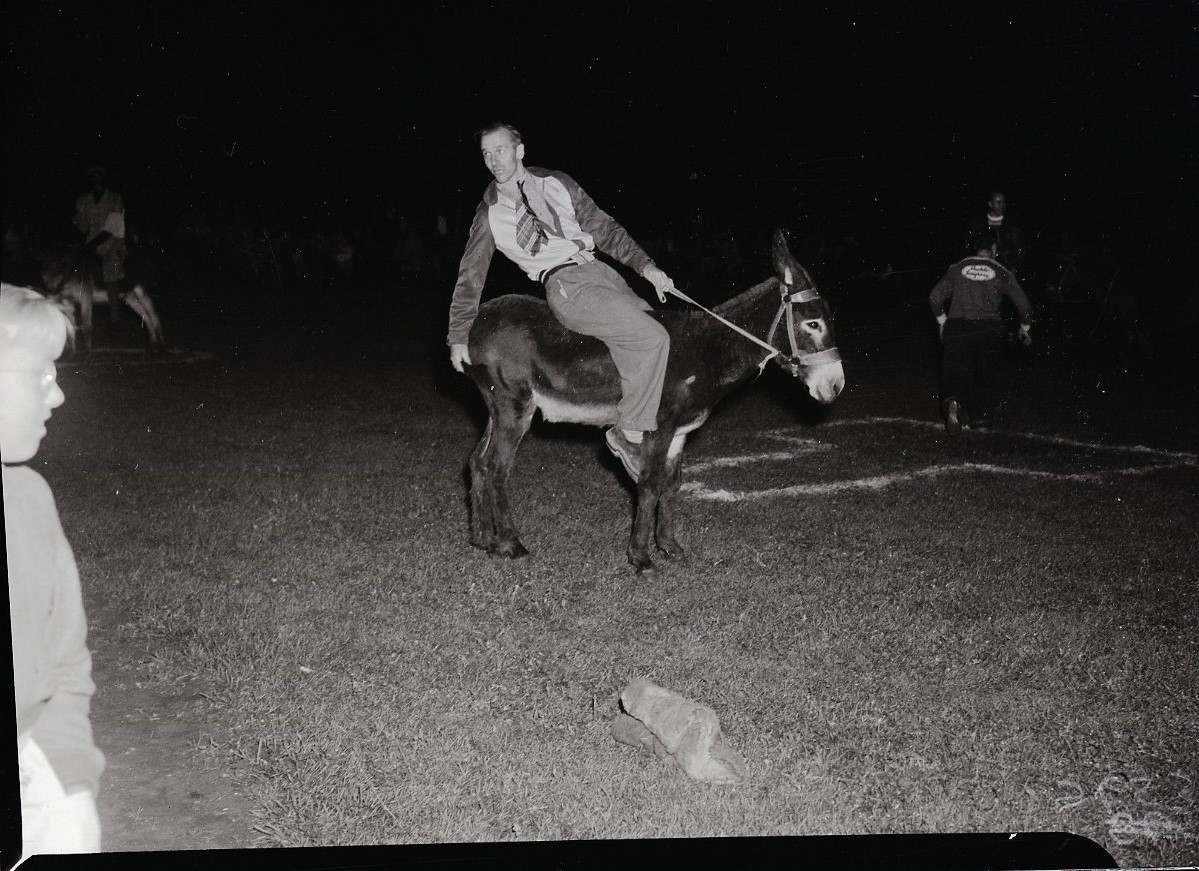
A donkey baseball player in action. Circa 1950. [COA123 4-204]
Wild Encounters
To conclude this blog series, I thought I would share some examples of unexpected encounters between humans and animals. While we do live alongside and in collaboration with many types of animals, we are often so engrossed in our daily human lives and our constructed society that we forget that we are surrounded by nature and animals living in the natural environment. As human-built landscapes continue to encroach on natural landscapes and ecosystems, unexpected, and sometimes even dangerous, interactions between humans and animals seem to be increasing in frequency. As we force our way into the domain of “wild animals”, those same animals find ways to exist within our built environments.
We have a number of photographs detailing these interactions, some of them strange and humorous, which I’ve shared below.

An unidentified soldier from the Second World War holding a fawn in his lap.

A young man watching a raccoon from a distance. Circa 1949-1950. [COA123 4-187].
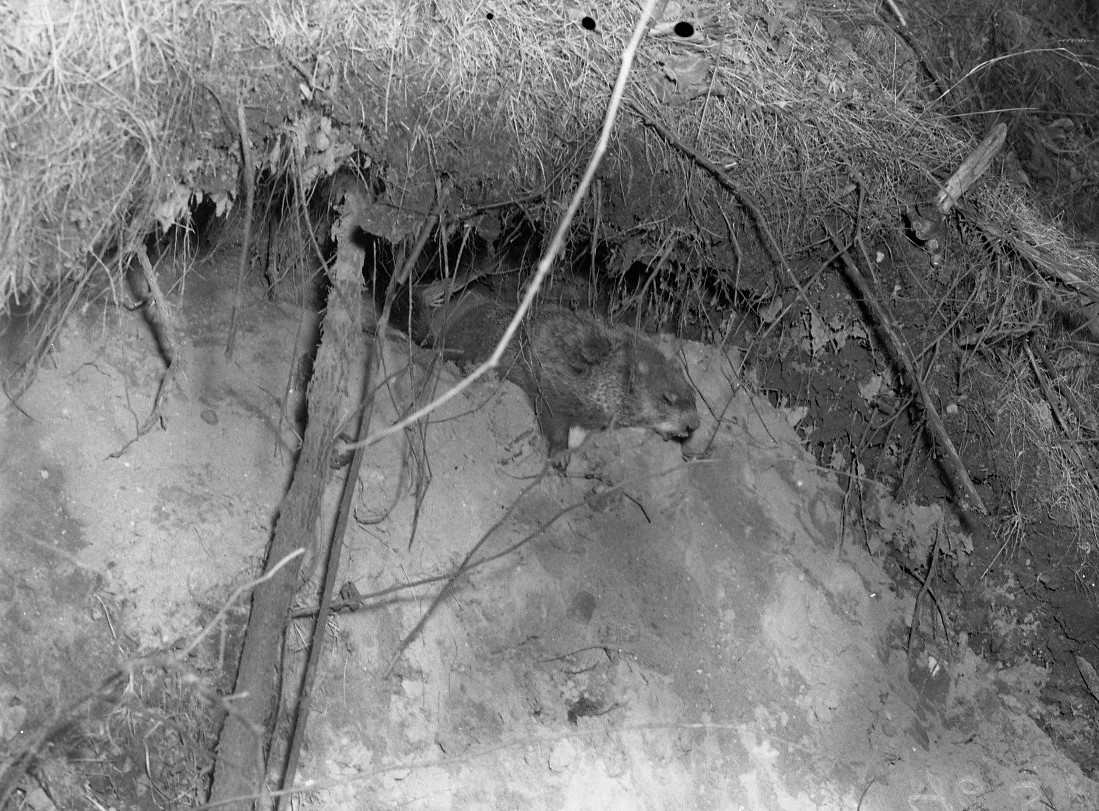
A photo of a groundhog emerging from a burrow hole, taken for the Woodstock Sentinel-Review newspaper. Circa 1949-1950. [COA123 4-188]

Two Texaco employees attempting to remove a stubborn raccoon from the garage. [COA123 8-83].
